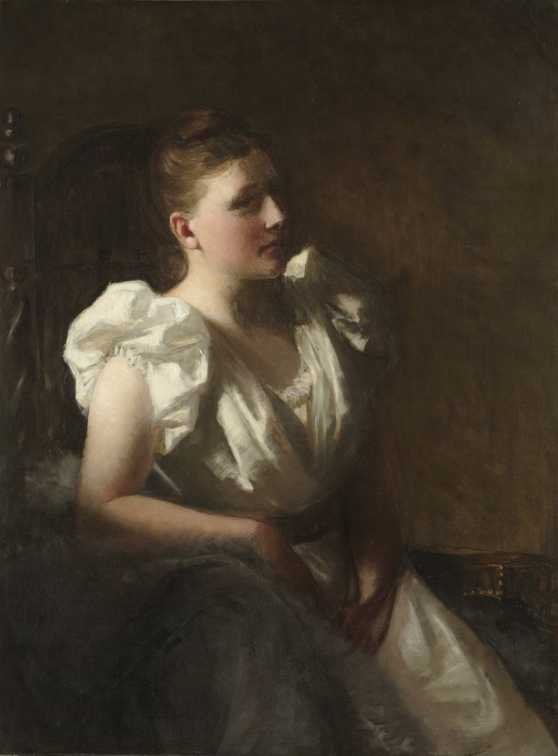Teach This Poem is a weekly series featuring a poem from our online poetry collection, accompanied by interdisciplinary resources and activities designed to help K-12 teachers quickly and easily bring poetry into the classroom.
Featured Poem
Amy Lowell (1874-1925)

Amy Lowell (1874-1925) by Sarah Gooll Putnam, (1851–1912). Date: 1892. Medium: Oil on canvas. Dimensions: 40 x 30 in. Credit: Harvard University Portrait Collection, Gift of Mrs. Harold Russell to Harvard University for the use of Lowell House, 1933
Classroom Activities
- Warm-up: Ask your students to think about if they ever had a crush that would not go away on someone. If they haven’t, ask them to imagine what this might feel like and to write about these feelings in their journals. They do not have to share this specific writing with anyone else.
- Show your students the image of the portrait of Amy Lowell and give them plenty of time to look at it carefully. Ask them to write down what they notice in the portrait—the position of the figure, the light, what the figure is wearing, the colors, etc.—and to focus on the choices the artist made in painting this portrait. Caution them not to jump to an interpretation of what they see, but instead to focus on what they notice. Have them turn and talk with a partner to share their observations.
- Show your students the poem “A Fixed Idea” by Amy Lowell. Ask them to read it silently, writing down the words, phrases, and structural elements that jump out at them. Ask one student to read the poem aloud while the other students listen and add new items to their lists from what they have just heard. Repeat this process with another student reading aloud. Ask them to get in small groups to share their lists.
- Whole-class discussion: What details did your students notice in the painting that might suggest how the subject in the painting was feeling? (Make sure they refer to their lists of what they noticed.) On what do they base this interpretation? What did they notice in the poem? What evidence in the poem might give them insight into the speaker’s situation and feelings? Ask them to keep both the warm-up activity and the poem in mind during this discussion.
- If your students have not noticed that the poem is a sonnet and you have not reviewed this poetic form before, this is an opportunity to discuss Lowell’s use of the form.
- Follow-up activity: Ask small groups of students to create tableaux (still pictures using their bodies) illustrating the feelings portrayed in Lowell’s poem. You may also want to invite your students to write their own poems expressing the feelings they wrote about in the warm-up activity. Remind them that a fictional character can be used to express emotions in a poem.
